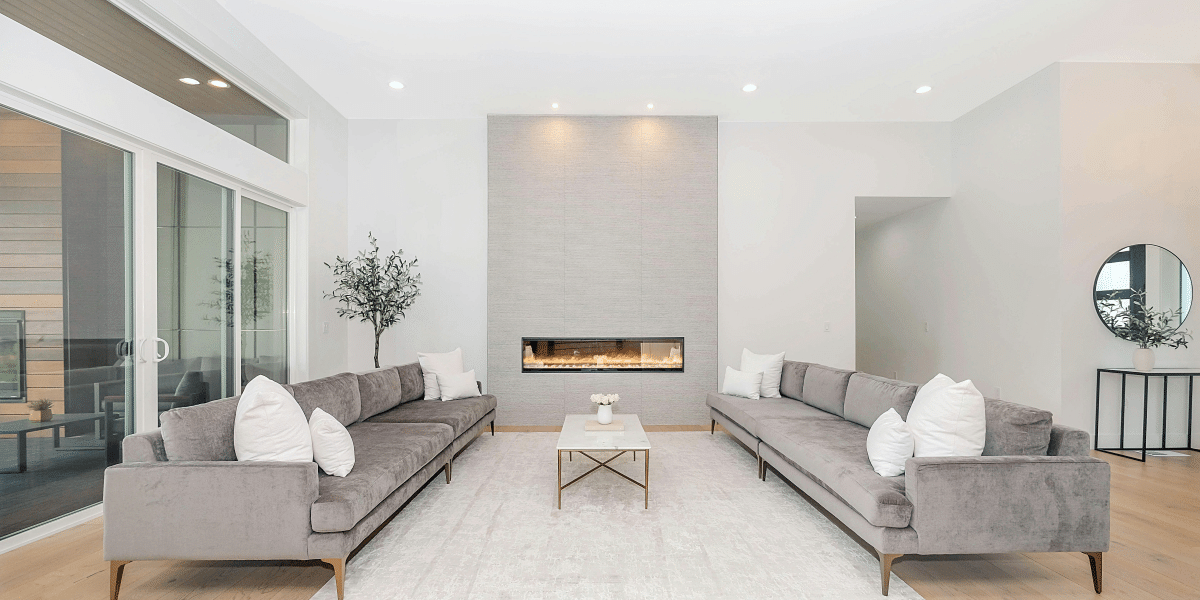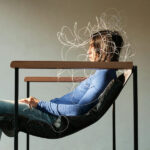Lighting is pivotal in shaping the ambiance, functionality, and aesthetic of interior spaces. With technological advances and the evolution of design philosophies, the future of lighting is set to be dynamic and innovative.
Read on to learn more about today’s interior design and lighting trends.
Interior Lighting Design Trends To Know
Here are the key trends to watch in interior lighting design.
Smart Lighting Systems
Intelligent lighting systems are at the forefront of innovation, offering users unprecedented control over their lighting environments. These systems allow brightness, color, and scheduling adjustments via mobile apps or voice commands. Integrations with home automation systems like Alexa and Google Home enhance convenience and energy efficiency. According to a report by Statista, the global market for smart lighting is projected to grow to $44 billion by 2030.
These systems incorporate adaptive lighting technology that adjusts lighting based on the time of day, occupancy, and weather conditions. Sensors and advanced algorithms ensure optimal lighting levels for comfort and energy efficiency. This technology is particularly beneficial in commercial spaces, where it can significantly reduce energy costs while maintaining a pleasant environment.
These lighting systems can create a more personalized living experience in residential settings by automatically adjusting to support daily activities. Lights can gradually dim in the evening to promote relaxation and better sleep or brighten in the morning to simulate natural daylight. It improves functionality and comfort by intelligently responding to environmental changes and user behavior.
Sustainable Lighting Solutions
Sustainability is a critical lighting design trend driven by a growing awareness of environmental impacts. LED technology, which consumes 75 percent less energy and lasts 25 times longer than traditional ones, is central to this movement. Within the next four years, estimates show that LED lighting penetration will hit 61 percent.
Many designers also incorporate recycled materials into light fixtures and explore renewable energy sources for outdoor lighting.
Biophilic Design and Natural Light
Biophilic design, which aims to connect interiors with nature, is influencing lighting trends by maximizing the use of natural light. Large windows, skylights, and glass doors bring more daylight into homes, reducing reliance on artificial lighting during the day.
This approach enhances the aesthetic appeal of living spaces and has numerous health benefits. Natural light improves mood, boosts productivity, and regulates circadian rhythms, leading to better sleep patterns.
Minimalist and Geometric Fixtures
Minimalist design continues to dominate interior trends, reflected in sleek and unobtrusive lighting fixtures. Geometric shapes, from simple lines to intricate patterns, are popular, adding modernity and sophistication to spaces. These fixtures often serve as functional lighting and artistic statement pieces, blending seamlessly with various décor styles. The clean lines and refined forms create a sense of order and simplicity, boosting the overall aesthetic without overwhelming the space.
A growing trend that complements minimalist and geometric fixtures is the concept of “quiet luxury.” This trend emphasizes understated elegance and high-quality materials, focusing on craftsmanship and timeless design over ostentation. Quiet luxury manifests in lighting fixtures through premium materials such as brushed metals, frosted glass, and natural stone. Combining minimalism with these luxurious elements results in subtle and opulent lighting and contributes to a serene and sophisticated ambiance.
Minimalist and geometric fixtures and the quiet luxury trend redefine modern interiors, creating functional and visually stunning spaces. These design choices offer a refined approach to contemporary living by prioritizing quality and simplicity.
Human-Centric Lighting
Human-centric lighting (HCL) focuses on the impact of lighting on human health and well-being. By simulating natural light cycles, HCL systems can improve mood, sleep patterns, and overall health. Research indicates that proper lighting can enhance cognitive performance and reduce errors in work environments. Adjustable color temperatures and light intensities help support the body’s circadian rhythm, making these systems particularly valuable in workspaces and healthcare settings.
Color and Customization
The trend of customizable lighting continues to grow, with color-changing LEDs and programmable systems becoming increasingly popular. Users can switch colors and intensities to suit their preferences and moods. This level of personalization extends to decorative fixtures, where bespoke designs and artisanal craftsmanship add unique character to spaces.
Advanced smart home technologies also allow seamless integration with voice-activated assistants and mobile apps, making adjustment easier.
Integration With Architecture
Modern interior design increasingly integrates lighting into the home’s architecture itself. Concealed lighting, such as recessed lights, cove lighting, and under-cabinet lights, enhances architectural features without drawing attention to the light source. This approach creates a clean and contemporary look, with light subtly highlighting textures and materials.
Additionally, floor-integrated lighting can accentuate pathways and open spaces, providing both function and aesthetic appeal. Staircase lighting, integrated into the steps or the handrails, adds a dramatic yet practical element to interior design.
Wall-integrated lighting to create a wash effect can emphasize a room’s vertical dimensions, enhancing space and depth perception. Incorporating elegant ceiling lights within coffered or tray ceilings can add a luxurious touch while maintaining a sleek appearance. By thoughtfully embedding lighting into various architectural elements, designers can create visually dynamic environments that are harmonious and sophisticated.
Artistic and Sculptural Lighting
Lighting fixtures are increasingly viewed as works of art. Designers are experimenting with unconventional materials and forms to create sculptural pieces for functional and aesthetic purposes. These artistic fixtures can become focal points in a room, adding a layer of visual interest and transforming the space. This trend sees the convergence of art and utility, where light installations illuminate and tell a story.
Materials such as hand-blown glass, reclaimed wood, and metal are crafted into intricate shapes and designs. These fixtures often draw inspiration from nature, abstract art, and geometric patterns, creating unique, eye-catching designs. Incorporating such pieces into interior spaces allows homeowners and designers to make bold statements, reflecting personal style and creativity.
Embracing the Future of Lighting
The future of lighting in interior design is bright, with innovations that enhance functionality and aesthetics. From intelligent and sustainable solutions to human-centric and adaptive technologies, these trends are set to transform our living and working spaces.
Embracing these trends improves the quality of our environments and aligns with a broader commitment to sustainability and well-being. Lighting will undoubtedly remain a pivotal element in the design and experience of interior spaces.
Published By: Aize Perez

















